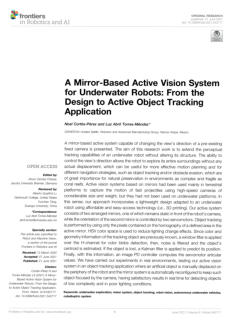Studies of ROV concepts 2021


Date of publication: 2021
Authors:
Javier Neira, Cristhel Sequeiros, Richard Huamani, Elfer
Machaca, Paola Fonseca, and Wilder Nina Sim
The present research is an effort to make a walkthrough of
evolution in this area, showing a diversity of structure
designs, used materials, sensors, instrumentation
technologies, kinds and the number of actuators
employed, navigation control techniques, and what is
new in development trends.
The paper gives a clear starting point for those who are
initializing into this research area; also, it brings some
helpful knowledge for those who already have
experience.

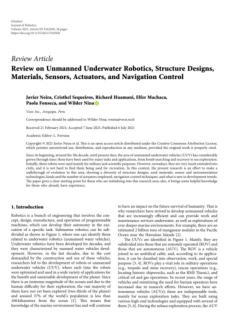

Date of publication: 2021
Author: Auguste Bourgois
This document is a doctorate thesis that describes the
reasons and the approach for creating autonomous ROVs
for the inspection and maintenance of wind farms.

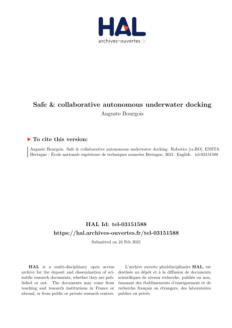

Date of publication: 2021
Authors:
Alexander Konoplin, Vladimir Filaretov, Alexander
Yurmanov.
A novel method for supervisory control of multilink
manipulators mounted on underwater vehicles is
considered. This method is designed to significantly
increase the level of automation of manipulative
operations, by the building of motion trajectories for a
manipulator working tool along the surfaces of work
objects on the basis of target indications given by the
operator.

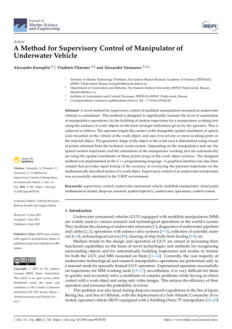

Authors:
Christoph Tholen, Iain Parnum, Robin Rofallski, Lars
Nolle, & Oliver Zielinski
Submarine groundwater discharge (SGD) is an essential
pathway of nutrients into coastal areas.
During the last decades, the interest of researchers in
SGDs has grown continuously. However, methods
applied for SGD research usually focus on the aquifer
or the mixing processes on larger scales. The distribution of
discharged water within the water column is not well
investigated.
Small remotely operated vehicles (ROV) equipped with
environmental sensors can be used to investigate the
spatial distribution of environmental parameters in the
water column. Herein, a low-cost multi-sensor platform
designed to investigate the spatial distribution of water
quality properties is presented. The platform is based on an
off-the-shelf underwater vehicle carrying various
environmental sensors and a short-baseline localization
system.

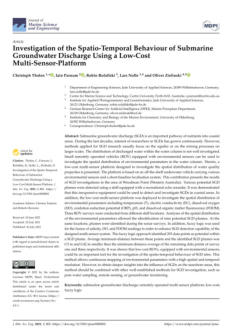

Date of publication: 2021
Authors: Alexander Miller, Boris Miller, Gregory Miller
This review presents common approaches to underwater
navigation and one novel velocity measurement method.
The latter is an analog of the well-known Optical Flow
method but based on a sequence of sonar array
measurements.



Date of publication: 2021
Author: A Sabau
Depending on the area of use, ROV must satisfy
numerous constructive and functional requirements,
which are difficult to achieve in practice, and the
simulation is a challenging alternative. The big challenge is
the simulation of the thrust force generated by the
propeller.
The present work aims to present a simulation with the
Ansys Fluid Dynamics software package.

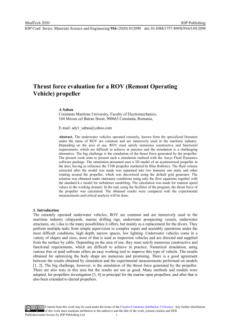

Date of publication: 2021
Authors:
Magnus Bjerkeng, Trine Kirkhus, Walter Caharija, Jens
T. Thielemann, Herman B. Amundsen, Sveinung
Johan Ohrem, and Esten Ingar Grøtli.
Purpose:
Aquaculture net cage inspection and maintenance is a
central issue in fish farming. Inspection using
autonomous underwater vehicles is a promising
solution. This paper proposes laser-camera triangulation
for pose estimation to enable autonomous net following
for an autonomous vehicle.

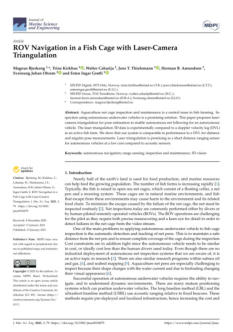

Date of publication: 2021
Authors:
A Yu Tolstonogov, A E Kozhushko, I A Chemezov, D A
Skalskii, & A Yu Kolomeitsev.
The connectedness of an ROV and a carrier vessel
imposes restrictions on the ROV and vessel’s joint
motion. This article aims to present the concept design
of an unmanned surface vehicle for an observation-
class ROV. The surface vehicle allows breaking wired
onnections between the carrier vessel and the ROV by a
wireless communication system based on Wi-Fi
technology.

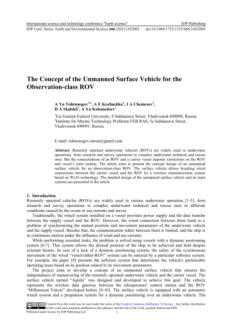

Authors:
Ji-Hong Li, Mun-Jik Lee, Hyungjoo Kang, Min-Gyu Kim,
& Gun Rae Cho.
An ROV trencher buries the subsea cables and pipelines
using a specifically designed tool. According to the soil
conditions, this trenching method can have two different
types, one is mechanical cutting, and the other one is
water jetting.
This paper presents a water jet tool design method for
a 2500 m depth-rated ROV trencher. A series of CFD
simulations and laboratory tests with one nozzle and a
ground test using a 1:6 scale jetting arm models were
carried out to derive and demonstrate the jetting tool
design parameters.

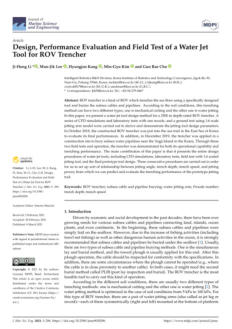

Authors:
Chenyu Zhao, Philipp Thies, Johanning Lars, James
Cowles.
This paper focuses on the hydrodynamic performance
of an unmanned vehicle system, consisting of a remotely
operated underwater vehicle (ROV) that has to be
launched and recovered autonomously from an
Autonomous Surface Vehicles (ASV), that is described
in detail.
The paper also assesses the overall performance of the
ASV/ROV system, including the stability of the ASV, the
ROV tidal current capacity, and the required power of the
launch and recovery winch system.



Authors:
P Tejaswini, I Sai Deepika, & Sakthivel Murugan
Santhanam
Remotely Operated Vehicles (ROVs) are manually
operated underwater vehicles designed for specific
applications in maritime environments. Vigilant
precautions must be ensured in creating their navigation
modules because of the inconsistent nature of
underwater channels. This paper aims to focus on this
point by developing an apt navigation system for the
Remotely Operated Vehicle, ORCA, which has been
equipped with sensors such as temperature, pressure, and
leak detector, for monitoring the ambient conditions
during deployment and an Inertial Measurement Unit for
tracking and positioning of an ROV.

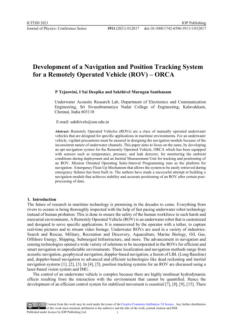

Authors:
O.W. Zulkarnain, A.A. M. Redhwan, N. Bahiyah Baba,
M.N. Fadhil, & S. Rosni
The present study explores the underwater remotely
operated vehicle (ROV) control named SelamDrone.
The maneuvering, which includes forward-reverse and
rise-sink control, is designed and developed.
Beforehand, various factors in designing and
fabricating the prototype of underwater ROV, namely
functionality, stability, and motor efficiency, need to be
considered.
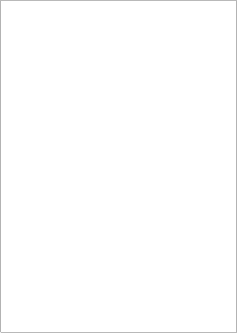
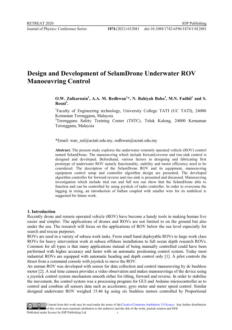

Authors:
Peng Chen, Yuwang Liu, Shangkui Yang, Jibiao Chen,
Qifeng Zhang, & Yuangui Tang
Ensuring the safety of umbilical cables is a core challenge
in deep-sea robotics. The umbilical cable usually amplifies
the motion amplitude of the mother ship owing to its
elastic material. Under the joint action of the mother ship
motion and ocean current, the strong internal force waves
generated in the umbilical cable tend to cause serious
accidents such as umbilical cable breakage. A dynamic
model of an umbilical cable under complex sea conditions
is established based on the Kirchhoff rod theory. The
differential quadrature and New-mark methods are used
to discretize the equation in the space and time domains.
The characteristics of the umbilical cable under different
conditions are analyzed.

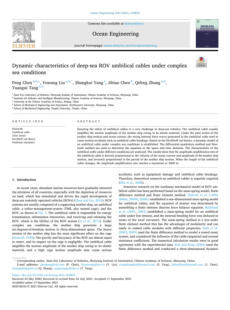

Date of publication: 2021
Authors: Chenyu Zhao, Philipp R. Thies, Lars Johanning.
This paper presents the design and performance of the
winch system, which couples the ASV and ROV and
deploys/recovers the ROV. The hydrodynamic models and
control algorithms are developed and solved with
analytical and numerical approaches. The winch
performance needs to meet a range of operational
profiles, including i) ASV following/ not following the ROV
ii) winch operating in speed control iii) winch operating in
tension control iv) varying ROV distance and depths
targets. The work determines the required umbilical length
for different ROV targets and suitable winch speeds.



Date of publication: 2021
Authors:
Jonatan Scharff Willners, Ignacio Carlucho, Tomasz
Łuczynski, Sean Katagiri, Chandler Lemoine, Joshua
Roe, Dylan Stephens, Shida Xu, Yaniel Carreno, Eric
Pairet, Corina Barbalata, Yvan Petillot, Sen Wang
Autonomous Underwater Vehicles (AUVs) are becoming
increasingly crucial for different types of industrial
applications. The generally high cost of AUVs restricts
access to them and therefore advances in research and
technological development. However, recent advances
have led to lower-cost commercially available Remotely
Operated Vehicles (ROVs), which present a platform that
can be enhanced to enable a high degree of autonomy,
similar to that of a high-end AUV. This article presents how
a low-cost commercial-off-the-shelf ROV can be used as a
foundation for developing versatile and affordable AUVs.
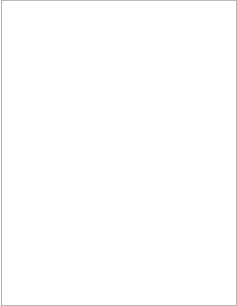


Date of publication: 2021
Authors:
Weilei Mu, Yuxue Wang, Hailiang Sun, and Guijie Liu.
This paper proposes a double-loop sliding mode controller
with an ocean current observer to solve the trajectory
tracking problem of insufficient response and the
significant tracking error of remotely operated vehicles
(ROVs) under the interference of large ocean currents.
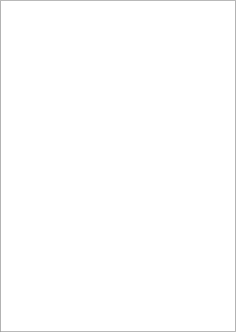


Authors:
Mohamed Moustanir, Karim Benkirane, Adil Sayouti,
Hicham Medromi
In previous publications, the authors proposed the
architectural solution of an ROV with only four thrusters
without rudders or diving bars to reduce the
hydrodynamic dampers and mechanical elements and
justified the choice of this arrangement. Also, they started
kinematic and dynamic studies of the marine robot and
demonstrated that this remotely operated vehicle (ROV)
could move in a perfect environment without gravity or
hydrodynamic dampers using the mathematical model
under MATLAB. In this article, they study the behavior of
this marine vehicle in a real environment.

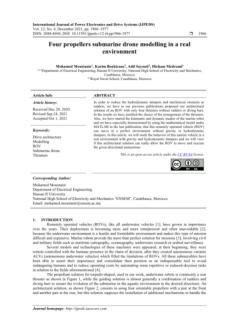

Authors:
Aviv Elor, Tiff any Thang, Benjamin P. Hughes, Alison
Crosby, Amy Phung, Everardo Gonzalez, Kakani Katija,
Steven H. D. Haddock, Benjamin E. Erwin, Eric J.
Martin, Leila Takayama.
Remotely Operated Vehicles (ROVs) are essential to
human-operated underwater expeditions in the deep
sea. However, piloting an ROV to safely interact with live
ecosystems is an expensive and cognitively demanding
task, requiring extensive maneuvering and situational
awareness. Immersive Virtual Reality (VR) Head-Mounted
Displays (HMDs) could address some of these challenges.
This paper investigates how VR HMDs influence operator
performance through a novel telepresence system for
piloting ROVs in real-time.
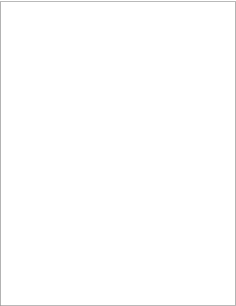


Date of publication: 2021
Authors: Zachari Smolder, Jingang Yi.
This paper explores using remotely operated vehicles
as a cheap and affordable water exploration platform.
ROV’s high cost is a prohibitive barrier, preventing
widespread adoption of ROV for personal, research,
and conservation uses. This paper explores a cost-effective
ROV with video capturing and directional control
capabilities to address this problem. Using state-of-the-art
robotic technologies, a cost-effective competitive ROV was
designed and constructed. It was tested to a depth of 7 m
and could reach 30 m.
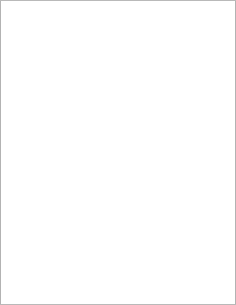


Date of publication: 2021
Authors:
Ruochen An, Shuxiang Guo, Yuanhua Yu, Chunying Li
, & Tendeng Awa.
Conventional manipulators are too heavy for small
target objects and unsuitable for shallow sea working.
In this paper, a bio-inspired Father-Son Underwater
Robot System (FURS) is designed for underwater target
object image acquisition and identification.
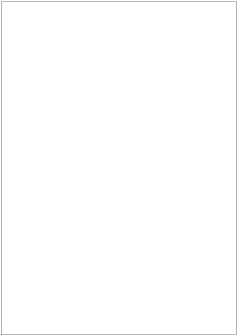


Date of publication: 2021
Authors:
Chengqi Long, Xiaohui Qin, Yougang Bian, Manjiang
Hu.
This paper proposes a tracking method aiming at
trajectory tracking for a remotely operated underwater
vehicle (ROV) under external disturbances and
measurement noises.

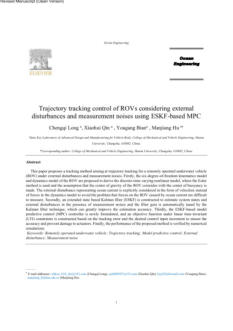

Date of publication: 2021
Authors:
Samson Nitonye, Sidum Adumene, Charles
Ugochukwu Orji, Anietie Effiong Udo.
This paper proposes a structured probabilistic
methodology for the operational failure assessment
(OFA) characteristics of ROV, for an effective integrity
assessment of marine robotic in offshore environments.

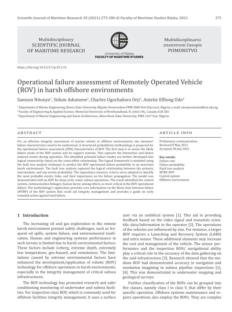

Date of publication: 2021
Authors: Stanisław Hozyn & Bogdan Zak.
Remotely Operated Vehicles (ROVs) prime function is
to replace humans during risky subaquatic operations.
These vehicles gather videos from underwater scenes
sent online to a human operator who provides
control. Furthermore, these videos are used for
analysis. This demands a camera operating at a close
distance to the observed objects. Thus, the vehicle
should move with a constant speed and a measured
distance from the bottom to obtain a detailed
depiction. As very few inspection-class ROVs possess
navigation systems that facilitate these requirements,
this study had the objective of designing a vision-based
control method to compensate for this limitation.

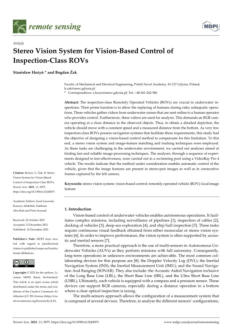

Authors:
Kyle L. Walker, Roman Gabl, Simona Aracri, Yu Cao,
Adam A. Stokes, Aristides Kiprakis, Francesco Giorgio-
Serchi.
Predictive control methods can substantially improve
the performance of Unmanned Underwater Vehicles
(UUVs), particularly in shallow water environments or
near the free surface where wave-induced disturbances
are of magnitude comparable to the vehicle's
characteristic inertia. Fast estimation of the time evolution
of hydrodynamic forces acting on a vehicle is required to
facilitate the adoption of these methods. To this end, the
authors perform experiments in a wave tank with an ROV
to validate the use of Linear Wave Theory (LWT) to
capture the time history of the surge, heave, and pitch
wave-induced forces and moments.



Authors:
Kamil Cetin, Carlos Suarez Zapico, Harun Tugal, Yvan
Petillot, Matthew Dunnigan, & Mustafa Suphi Erden.
This study aims to design an adaptive controller for the
hard contact interaction problem of underwater
vehicle-manipulator systems (UVMS) to realize asset
inspection through physical interaction. The proposed
approach consists of a force and position controller in
the operational space of the end effector of the robot
manipulator mounted on an underwater vehicle. The
force tracking algorithm keeps the end effector
perpendicular to the unknown surface of the asset,
and the position tracking algorithm makes it follow a
desired trajectory on the surface. The challenging
problem in such a system is to maintain the end effector of
the manipulator in continuous and stable contact with the
unknown surface in the presence of disturbances and
reaction forces that constantly move the floating robot
base unexpectedly.
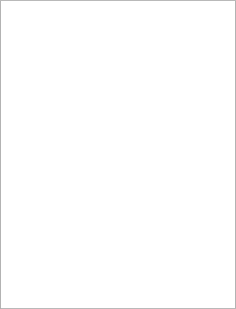
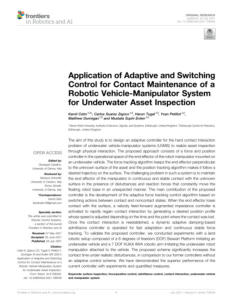

Date of publication: 2021
Authors:
Donatas Bagocius, Aleksas Naršcius
Underwater noise is the most pervasive physical
energy that spreads in the underwater marine
environment.
The concerns regarding man-made underwater noise
effects on aquatic animals became prominent within
scientific communities. This paper presents the steps
for the development of the autonomous recorder, its
features, capabilities, and calibration results of the
underwater sound recording system.

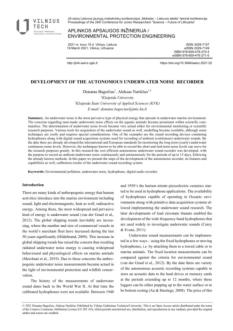

Authors: Peter Danielis, Helge Parzyjegla, Mostafa Assem
Mohamed Ali, Frank Sill Torres.
The modeling and simulation of the energy
consumption and underwater acoustic
communication play an essential role in studying and
developing these systems. The authors provide a
modular simulation model for the energy consumption
and underwater acoustic communication of AUVs
implemented in the network simulator OMNeT++ using
the INET framework. More specifically, the authors extend
several INET modules in such a way as to reflect the
characteristics of AUVs and underwater communication.
The authors also study and analyze the AUVs’ energy
consumption and dependence of the message quality on
different properties such as those mentioned above.

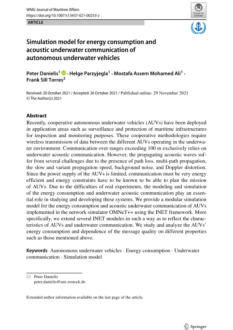

Date of publication: 2021
Authors:
Chinonso Okereke, Nur Haliza Abdul Wahab, Mohd
Murtadha Mohamad, & S H Zaleha.
The introduction of the Internet of Underwater Things
(IoUT) underwater has become a powerful
technology necessary to the quest to develop a SMART
Ocean. Autonomous Underwater Vehicles (AUVs)
play a crucial role in this technology because of their
mobility and more extended energy storage. For AUV
technologies to be effective, the challenges of AUVs
must be adequately solved. This paper provides an
overview of the difficulties of IoUT, the contributions of
AUVs in IoUT as well as the current challenges and
opening in AUV.



Authors:
Vinicio Rosas-Cervantes, Quoc-Dong hoang, Sooho
Woo, and Soon-Geul Lee.
This article proposes a 3D robot trajectory estimation
based on a multimodal fusion of 2D features extracted
from color images and 3D elements from 3D point
clouds.

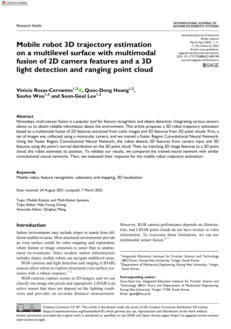

Authors: Li Bian, Xiangqian Che, Liu Chengyang, Dai
Jiageng, and He Hui.
Despite advances in modern control theory and artificial
intelligence technology, current methods for tuning
Proportional-Integral-Derivative (PID) controller parameters
based on the traditional Particle Swarm Optimization
(PSO) algorithm do not meet the requirements for
controlling an Unmanned Surface Vessel (USV) propulsion
motor.
To overcome the disadvantages of the PSO algorithm,
such as low precision and easily falling into a local
optimum, the Beetle Antennae Search (BAS) algorithm
can be introduced into the PSO algorithm by replacing
particles with beetles, effectively preventing the PSO
algorithm from easily falling into the local optimum.

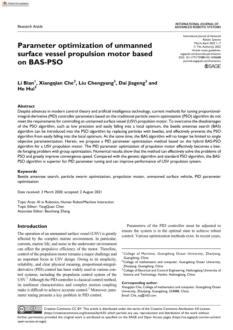

Authors:
M. A. Malleswari, B. Venkata Rao, K. Narasimha Rao
Solar-powered Remotely Operated Underwater
Vehicle (ROV) used in surveillance applications is required
to have longer endurance. To achieve this objective,
renewable energy is integrated with the efficient electric
propulsion of the ROV. Since the power generated is to
be utilized effectively, it is imperative to prefer Maximum
Power Point Tracking (MPPT) techniques. However, for
designing optimized ROV propulsion, a combined
simulation of ROV propulsion, control, and solar power
interface is to be done.

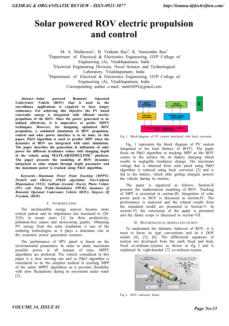

Authors:
Christos C. Constantinou, George P. Georgiades, and
Savvas G. Loizou
It has been a challenge for researchers to design
automatic underwater machines that should be simple
and contain diving capabilities with rapid turning and
reversing features. In this paper, The authors presented
the prototype model of under-actuated unmanned
underwater remotely operated vehicle. The modeling and
control design of the proposed model addresses the non-
holonomic issue. This prototype will consist of three main
thrusters for motion in the x and y-direction. A flap
attaches to it by a servo motor to control yaw motion and
to control the direction and turn.

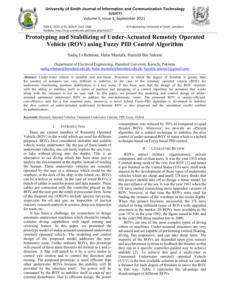

Authors:
Josep Bosch, Pere Ridao, Rafael Garcia and Nuno
Gracias
This paper describes the development and experimental
validation of algorithms for a novel laser vision system
(LVS), suitable for measuring the relative posture from
both solid and mesh-like targets in underwater
environments. The system was developed in the
framework of the AQUABOT project, a research project
dedicated to developing an underwater robotic system for
inspection of offshore aquaculture installations.

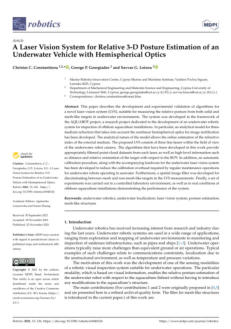

Authors: Brian R. Page, Reeve Lambert, Jalil Chavez-
Galaviz and Nina Mahmoudian
This paper presents an integrated navigational algorithm
to facilitate the docking of autonomous underwater
vehicles. The algorithm dynamically re-plans paths to
create an efficient trajectory from the current vehicle
position through approach into the terminal homing. The
course is followed using an integral line of sight control
until handoff to the terminal homing method. A light
tracking algorithm drives the vehicle from the handoff
location into the dock.

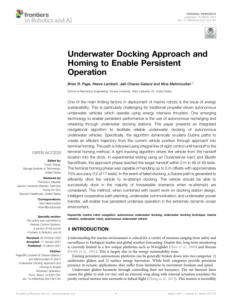

Author: Kun Seng Vu
The purpose of this paper is to describe an array of
tools for simulating underwater vehicles in the virtual
reality software platform Unity. The advantage of using
Unity is that it provides a helpful interface to modify an
object’s attributes and its scripts easily. This allows the user
to change and adapt the simulator to different
environmental situations.

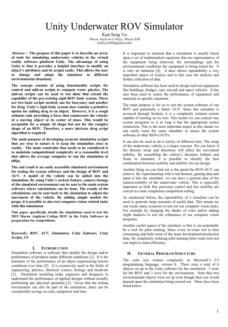

Authors:
Chenyu Zhao, Philipp R Thies, Lars Johanning
Combined Autonomous Surface Vehicles (ASV) and
remotely operated underwater vehicles (ROV) inspection
and intervention systems can contribute to future asset
management of offshore renewable energy. This paper
presents the design and performance of the winch system
which couples the ASV and ROV and deploys/recovers
the ROV. The hydrodynamic models and control
algorithms are developed and solved with analytical and
numerical approaches







Authors:
Zhengliang Hu, Jinxing Huang, Pan Xu, Mingxing
Nan, Kang Lou, and Guangming Li
Fiber-optic hydrophones have received extensive research
interest due to their advantage in ocean underwater
target detection. This study introduces a kernel extreme
learning machine (K-ELM) to source localization in
underwater ocean waveguides.
As a data-driven machine learning method, K-ELM does
not need a priori environment information compared to
the conventional method of match field processing.



Authors:
Junli Wang, Shitong Wang, and Wenhao Leng
This paper discusses an estimation method for the joint
angles of a manipulator, in which several markers are
arranged on the arm links and positioned from the
corresponding cameras.
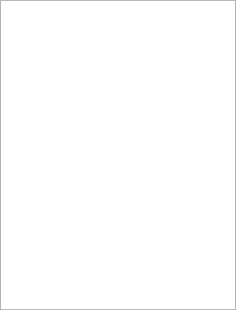
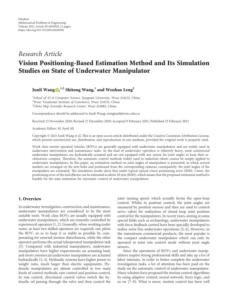

Date of publication: 2021
Authors: Yufan Zhai, Xingwen Zheng, Guangming Xie
Any phenomenon in nature is a potential to be an
inspiration for engineers to propose new ideas. The
lateral line is a typical example that has attracted more
interest in recent years. With the aid of the lateral line,
fish are capable of acquiring fluid information around
them, which is of great significance for them to survive,
communicate, and hunting underwater. This paper
briefly introduces the morphology and mechanism of the
lateral line. Then it focuses on the development of an
artificial lateral line, which typically consists of an array of
sensors and can be installed on underwater robots.



Authors: Zhong Shen, Yafei Zhao, Hua Zhong, Kailuan
Tang, Yishan Chen, Yin Xiao, Juan Yi, Sicong
Liu, and Zheng Wang
Soft robots are ideal for underwater manipulation,
sampling, and other servicing applications. However,
the inherent flexibility and high nonlinearity of soft
materials also result in combined complex motions,
which create both soft actuator and sensor challenges
for force output, modeling, and sensory feedback,
especially under highly dynamic underwater
environments. To address these limitations, a novel Soft
Origami Optical-Sensing Actuator (SOSA) with
actuation and sensing integration is proposed in this
paper.

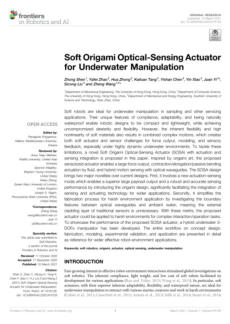

Authors:
Minsu Kang, Kahyun Sun, Minho Seong, Insol Hwang,
Hyejin Jang, Seongjin Park, Geonjun Choi, Sang-06, Jaeil
Kim and Hoon Eui Jeong
Bio-inspired adhesives that emulate the unique dry and
wet adhesion mechanisms of living systems have been
actively explored over the past two decades.
Synthetic bio-inspired adhesives that have recently been
developed exhibit versatile, smart adhesion capabilities,
including controllable adhesion strength, active adhesion
control, no residue remaining on the surface, and robust
and reversible adhesion to diverse dry and wet surfaces.
Owing to these advantages, bio-inspired adhesives have
been applied to various engineering domains.
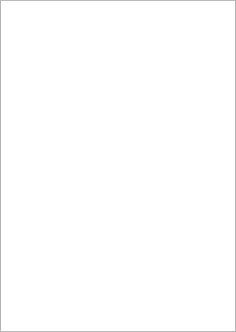
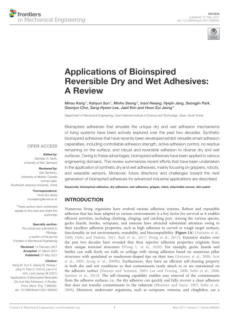

Authors: Goffredo Giordano, Marco Carlotti, and
Barbara Mazzolai
Octopus skin is an amazing source of inspiration for
bio-inspired sensors, actuators, and control solutions in
soft robotics. Soft organic materials, biomacromolecules,
and protein ingredients in octopus skin combined with a
distributed intelligence, result in adaptive displays that can
control emerging optical behavior and 3D surface textures
with rough geometries, with remarkably high control
speed. Being able to replicate deformable and compliant
materials capable of translating mechanical perturbations
into molecular and structural chromogenic outputs could
be a glorious achievement in materials science and the
technological field.

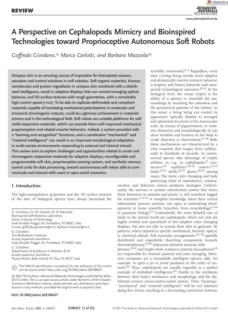

Authors: Yue Wang, and René Hensel
Underwater or wet adhesion is highly desirable for
numerous applications, but it is counteracted by the
liquids in contact that weaken intermolecular attraction.
The problem is exacerbated in conjunction with surface
roughness when liquids partially remain in grooves or
dimples of the substrate. In the present study, a cupped
microstructure with a cavity inspired by the suction
organs of aquatic animals is proposed.
The microstructures (cup radius of 100 µm) are made
from polyurethane using two-photon lithography,
followed by replica molding.



Authors:
Gong Shao-feng, Zhang Jian-bin, Cheng Dong, Xiao Hai-
Yan, Dong Ping WU Zhan-sheng
This paper describes a new type of underwater vehicle
simulator. The underwater vehicle simulator adopts a
capsule prefabrication structure and can be carried on
a UUV. Each UUV can be loaded with multiple
underwater vehicle simulator capsules. After sailing to
the predetermined location, the long-distance delivery
is carried out. After the underwater vehicle simulator is
fully charged and expanded, the underwater vehicle
simulator cluster is formed to achieve tactical purposes,
such as confusing and inducing enemies in quantity,
orientation, and deployment.

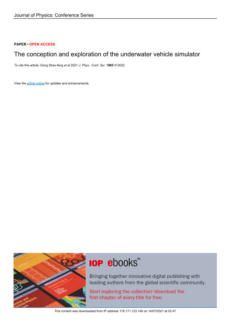

Authors:
Faryar Shamshiri Amirkolai, Reza Hasanzadeh Ghasemi
It is impossible to implement some tasks by divers
because of the complexity of the underwater environment
and high pressure in the deep sea. These tasks can only
be accomplished by a vehicle that includes all special
requirements, such as high maneuverability, precise
controllability, and especially hovering capability.
Underwater robots are integral parts of the industry and
marine science. The use of underwater vehicles has
increased with the development of activities in the deep
sea. This paper presents a special Hovering type
Autonomous Underwater Vehicle (HAUV) for underwater
missions.

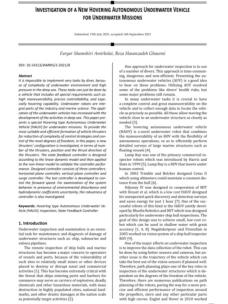

Authors:
Qinlin Tan, Yishan Chen, Jianhui Liu, Kehan Zou, Juan
Yi, Sicong Liu, and Zheng Wang
Benthic operations play a vital role in underwater
applications, where crawling robots have advantages
compared to turbine-based underwater vehicles in
locomotion accuracy, actuation efficiency, current
resistance, and carrying more payloads.
On the other hand, soft robots are quickly becoming
popular in underwater robotic design due to their
naturally sealed body structure and intrinsic compliance,
which is desirable for the highly unstructured and
corrosive underwater environment.

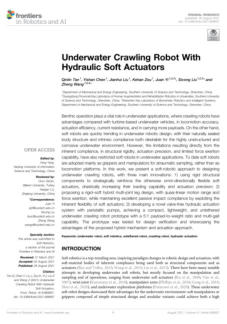

Authors:
Haiyang Jiang, Xudong Han, Yonglin Jing, Ning Guo,
Fang Wan, and Chaoyang Song
Bio-inspirations from soft-bodied animals provide a rich
design source for soft robots, yet limited literature has
explored the potential enhancement from rigid-bodied
ones. This paper draws inspiration from the tooth
profiles of the rigid claws of the Boston Lobster, aiming
for an enhanced soft finger surface for underwater
grasping using an iterative design process.

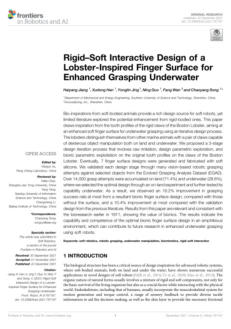



Click on the
octopus to return to
the top of the page

Authors: Penny Tarling, Mauricio Cantor, Albert Clapés,
Sergio Escalera
Monitoring populations through imaging has made data
collection cheaper, more widespread, and less intrusive.
However, it has also created the need to process and
analyze this data efficiently.
Counting animals from such data is challenging, especially
when they are densely packed in noisy images. Manual
attempts to process and analyze this data are slow and
expensive, while traditional computer vision methods are
limited in their generalizability. While deep learning is the
state of the art for many computer vision tasks, it has yet to
be properly explored for animal counting.

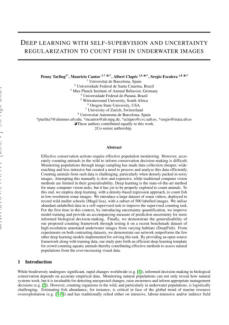

Authors:
Shadab Zaidi, Martina Maselli, Cecilia Laschi, & Matteo
Cianchetti
Soft robotics has been widely developed within the
international robotics community. These robots, being soft,
can be used in applications where delicate, yet effective
interaction is required. Soft grippers and manipulators are
essential, and their actuation is a fundamental area of
research. The primary purpose of this work is to provide
the reader with references to actuation technologies for
soft robotic grippers and their intended applications.
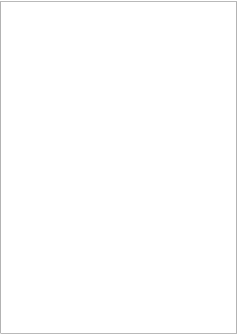
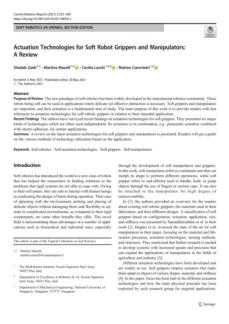

Authors: Dipta Gomes, A.F.M. Saifuddin Saif)
Underwater object detection is a particularly challenging
and relatively unexplored area in computer vision. This
research aims to refine image enhancement techniques
for underwater images by improving existing tools
designed for underwater object detection. The
comparative study clearly illustrates the advantages of the
proposed method over current techniques. In addition,
the research presents a framework specifically tailored for
the detection of underwater organisms, such as fish.



Date of publication: 2021
Authors: Junjun Chen, Zhengzhong Gao, Chen Huang,
and Lixing Yang
This paper addresses problems such as colour distortion,
poor contrast, and blurriness in underwater images by
introducing an enhancement algorithm that combines
Retinex and Wavelet fusion.
First, the multiscale Retinex algorithm is used for colour
correction.
Next, gamma transformation and sharpening are applied
to improve contrast and sharpness.
Finally, a wavelet fusion algorithm is used to improve the
clarity and detail of the image.

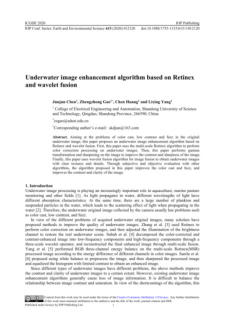

Authors: Hui Ma, Xiaokai Mu, and Bo He
Accurately navigating underwater robots is extremely
important. Location tracking can be disrupted by sensors,
such as micro-electromechanical systems sensors (MEMS).
Although deep learning can address this issue, it may not
always be fast or reliable.This paper proposes a new
adaptive navigation algorithm that utilizes deep learning
to enhance underwater navigation accuracy.

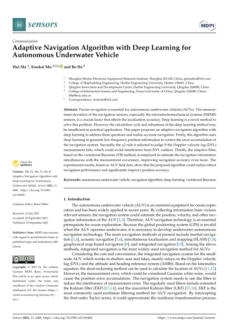

Authors: Zhengrui Huang and Shujie Wang
Recent development in wireless communications has
provided many reliable solutions to emergency
response issues, especially in scenarios with dysfunctional
or congested base stations. However, prior studies on
underwater emergency communications remain under-
studied, which poses a need for combining the merits of
different underwater communication links and the
manipulability of unmanned vehicles. To realize energy-
efficient underwater emergency communications, the
authors develop a novel underwater emergency
communication network assisted by multiple links,
including underwater light, acoustic, and radio frequency
links.

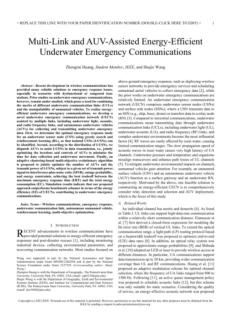



Authors: Waseem Akram and Alessandro Casavola
This paper describes a visual control scheme designed for
solving a pipeline tracking control problem using
Autonomous Underwater Vehicles (AUVs). It highlights
the advantages of using AUVs over traditional methods,
describe the methodology for generating a reference
path for pipeline inspection, and demonstrate the
robustness of the scheme through simulations.

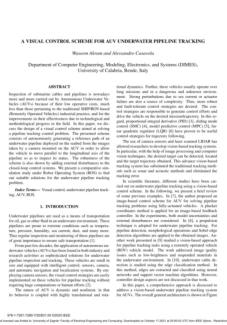



6 - Review of machine learning methods in soft robotics
Author: Daekyum Kim, Sang-Hun Kim, Taekyoung Kim,
Brian Byunghyun Kang, Minhyuk Lee, Wookeun
Park, Subyeong Ku, DongWook Kim, Junghan
Kwon, Hochang Lee, Joonbum Bae, Yong-Lae
Park, Kyu-Jin Cho, Sungho Jo
Soft robots are flexible and adaptive but face challenges in
modeling, calibration, and control due to complex
behaviors from soft materials. Studies use machine
learning to address these issues. This paper reviews
machine learning techniques for soft robots, categorizing
their use in soft sensors, actuators, and wearable robots. It
also analyzes trends and limitations in research, providing
a summary of current machine learning methods for soft
robots.




58 - Autonomous navigation in unknown environment using sliding
mode SLAM and genetic algorithm
Author: Salvador Ortiz, Wen Yu
In this paper, sliding mode control is combined with the
classical simultaneous localization and mapping (SLAM)
method. This combination can overcome the problem of
bounded uncertainties in SLAM. With the help of genetic
algorithm, our novel path planning method shows
many advantages compared with other popular
methods.
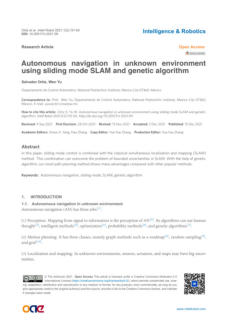



2 - Hull and Aerial Holonomic Propulsion System Design for Optimal
Underwater Sensor Positioning in Autonomous Surface Vessels

Authors:
Bruno A. Regina, Leonardo M. Honório, Antônio A. N.
Pancoti, Mathaus F. Silva, Murillo F. Santos, Vitor M. L.
Lopes, Accacio F. Santos Neto, and Luis G. F. Westin
Acoustic Doppler Current Profiler (ADCP) sensors are
crucial for evaluating river flow curves, but their
positioning can be problematic. This paper proposes a
catamaran-like autonomous surface vessel (ASV) with
optimized hull design, aerial propulsion, and sensor
placement to improve readings and allow inspections in
critical areas like ultra-shallow waters and mangroves.




24 - A Mirror-Based Active Vision System for Underwater Robots:
From the Design to Active Object Tracking Application
Author: Noel Cortes-Perez and Luz Abril Torres-Mendez
A mirror-based active system has been developed to
extend the perceptual tracking capabilities of an
underwater robot without altering its structure. This
allows the robot to explore its surroundings without
displacement, enabling effective motion planning and
navigation strategies like object tracking and obstacle
evasion. The system consists of two arranged mirrors, one
static and the other controlled by servomotors. Object
tracking is performed using pixels from the homography
of a fixed area in the active mirror, with HSV color space
used to reduce lighting effects. The system has been
tested in real environments, detecting objects of low
complexity and poor lighting conditions in real time.
